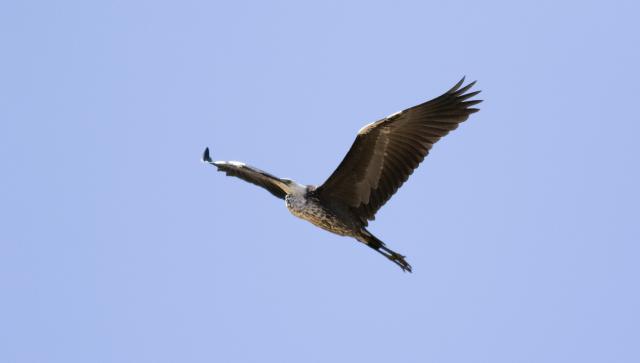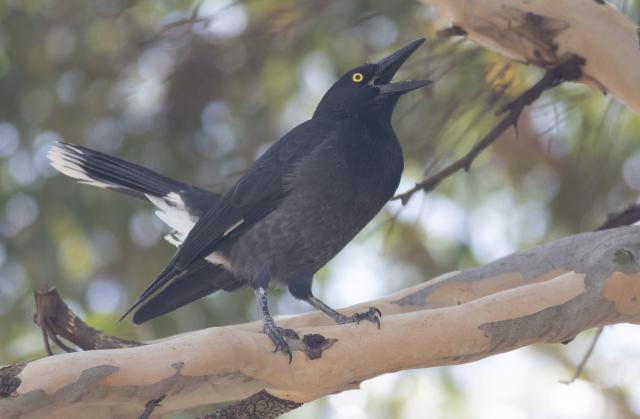The beginning of autumn has been very dry and warm with some ponds such as two large waterways at Breamlea Flora and Fauna Reserve completely dry. Hopefully there will be a few decent downpours soon, for the sake of my garden as well.
I received a very welcome message from Brendan who lives near Begola Wetlands. Brendan told me that he spotted a few magpie geese at Begola and it was the first time in 34 years of living near Begola that he had seen this species.
I have seen magpie geese at Reedy Lake in Moolap, but never near Ocean Grove. The magpie geese spent a night at Begola and then moved on, so by the time I walked around the wetlands they were nowhere to be seen.
It was still lovely to wander around the area, and I spotted eight Latham’s snipe and a pair of grey shrike-thrush.
On my way to work one day I drove down Lake Road near Lake Connewarre, where I saw a white-necked heron, which is a bird I have not seen around the Bellarine for a few years.
White-necked herons are large (a metre in length with a wingspan of around 160cm) with a white head, a white neck with black spots, black upperparts, and grey and white streaked underparts. These birds are nomadic like many species of water birds found in Australia.
I received a message from Leo, who was amazed to see 10 adult and eight juvenile hooded plovers on the east side of Point Impossible about 200 metres from the creek.
After the breeding season hooded plovers tend to congregate as flocks so I imagine that is why Leo saw such a big number of these birds.
There have been five fledglings around the Bellarine Peninsula this year, which is a bumper year for this vulnerable beach wader.
Thanks to all the Friends of the Bellarine Hooded Plovers volunteers who help to protect these vulnerable birds and to all the residents of the Bellarine and visitors to the area, who respect the signs on the beach when the birds are nesting and raising their chicks.
The pair of tawny frogmouths that I have been watching for years in Ocean Grove have totally disappeared since I last saw the male bird reinforcing the nest (which I thought was in preparation for the laying of a second clutch of eggs by the female for the season) in early February.
It was odd that the male bird was preparing the nest and then they haven’t been seen since, even in their usual non-breeding season roosting sites. I hope that this pair of clever, wary, mysterious birds are just being cryptic and have found a new place to hang out that is very well camouflaged. I hope I do spot them again.








